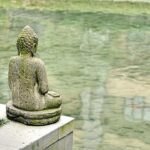Japan is a densely populated nation, and that makes the Japanese market harder in contrast with different markets. If we make the most of the probabilities of near-shore installations and even offshore installations sooner or later, that may give us the potential of continued use of wind vitality. If we go offshore, it is dearer as a result of the development of foundations is dear. But typically the wind is stronger offshore, and that may offset the upper prices. We’re getting increasingly more aggressive with our tools. The value—should you measure it per kilowatt-hour produced—goes decrease, as a result of the truth that generators are getting extra environment friendly. So we’re creating elevated curiosity in wind vitality. If you evaluate it to different renewable vitality sources, wind is by far essentially the most aggressive right now. If we’re in a position to make the most of websites near the ocean or at sea with good wind machines, then the value per kilowatt-hour is aggressive in opposition to different sources of vitality, go the phrases of Svend Sigaard, who occurs to be president and CEO of the world’s largest wind turbine maker, Vestas wind programs out of Denmark. Vestas is closely concerned in investments of capital into serving to Japan increase its wind turbine energy producing capability. It is searching for to get offshore installations put into place in a nation that it says is prepared for the fruits of funding into different vitality analysis and improvement.
The Japanese know that they can’t grow to be subservient to the vitality provide dictates of overseas nations—World War II taught them that, because the US decimated their oil provide strains and crippled their navy machine. They want to provide vitality of their very own, and so they being an remoted island nation with few pure sources which are conducive to vitality manufacturing as it’s outlined now are very open to overseas funding and overseas improvement in addition to the prospect of technological innovation that may make them impartial. Allowing companies resembling Vestas to get the nation operating on extra wind-produced vitality is a step in the appropriate route for the Japanese individuals.
The manufacturing of vitality via what is named microhydoelectric energy vegetation has additionally been catching on in Japan. Japan has a myriad rivers and mountain streams, and these are ideally suited locations for the placing up of microhydroelectric energy vegetation, that are outlined by the New Energy and Industrial Technology Development Organization as energy vegetation run by water which have a most output of 100 kilowatts or much less. By comparability, “minihydroelectric” energy vegetation can put out as much as 1000 kilowatts {of electrical} vitality.
In Japan, the small-scaled mini- and micro-hydroelectric energy vegetation have been regarded for a substantial time as being appropriate for creating electrical energy in mountainous areas, however they’ve via refinement come to be considered wonderful for Japanese cities as properly. Kawasaki City Waterworks, Japan Natural Energy Company, and Tokyo Electric Power Company have all been concerned within the improvement of small-scale hydroelectric energy vegetation inside Japanese cities.
Views: 5













